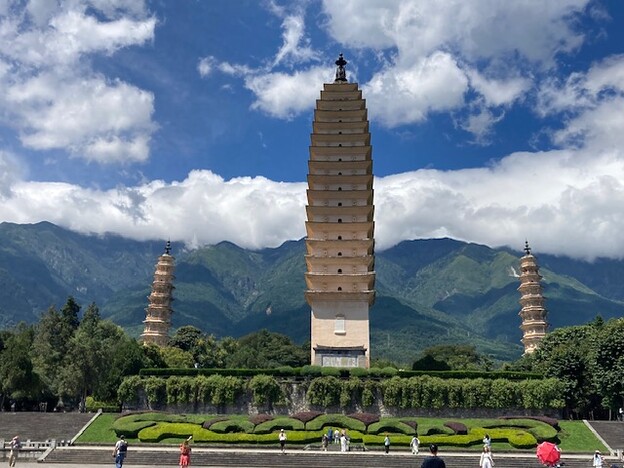Liz Gill explores Yunnan Province to discover more about its ethnic colourful traditions.
There is an old saying that Naxi men live in paradise. All they do is smoke, drink tea and alcohol, do a little gardening and bonsai making and play mahjong; the women do all the work and take all the hard decisions.
It is said as a joke but the truth behind it is darker. It was the men who travelled the Tea Horse Road for hundreds of years, taking the precious commodity nearly 2,000 miles from China into Tibet. The journey was long – five or six months to Llasa and two or three back – and dangerous. They could fall victim to robbers, accidents, disease and the harsh climate. When their wives said goodbye to them they did not know whether they would ever see them again so if they did return they were to be indulged and pampered,
The Naxi live modern lives nowadays, of course, but they continue to cherish their culture as do the other ethnic groups in Yunnan province. This, the most south-westerly in China bordering Vietnam, Laos and Myanmar, has the highest number of such minorities who make up a third of its population, each with their different language, music, art, religion, clothing, and food and drink.
The Ancient Art Of Pictography
There are 25 such groups, 15 of which are found only in Yunnan Province, but I had only time to explore three: the Dai in Xishuangbanna, the Bai in Dali and the Naxi in Lijiang. One of the curiosities of the latter is its use of pictographs where drawings replace letters, a system similar to those used by the Ancient Egyptians and Mayans but which is now the only one in the world still in active use.

It’s practised by the Donga, the Naxi priests, a position which passes from father to son and combines religious and ceremonial roles with healing and pictography. I learn more in a workshop where a Dongba starts by drawing some of the 1400 characters and asking the audience to guess their meaning. He then asks for suggestions for words which he draws before setting us off copying the phrase ‘may everything go as you wish’. Afterwards I ask him to do the pictographs for a grandma and three grandchildren. It is a sweet souvenir.
Hands On Experiences In Traditional Workshops
Participation was a key element of my visit as it is for the millions of Chinese tourists who flock to the area so I also enjoyed tie-dying, papermaking, copper beating and a stint on a potter’s wheel.
At the copper workshop I try out a 500-year-old skill guided by a master whose family have practised the craft for generations. Before I start, he shows us raw copper – a block of stone with green veins – before we choose thin strips which will become a bookmark, a dish or in my case a spoon
I sit at a big wooden block which has both a metal stump and indents to help me shape my artefact. I tap away with my little hammer with the occasional gentle adjustment from an assistant until I have the right shape. It is then polished and embossed with my name. I feel disproportionately pleased with myself.


It is the same at the tie-dying workshop where a group of us twist, knot or roll a headsquare or a sponge bag into various shapes and secure them with twine before plunging them into great vats of blue dye made from the isatis root or woad as our ancestors would have known it. The professionals then beat them hard to remove the excess dye before allowing us to proudly unfurl them.
I similarly key into an ancient skill when I help with papermaking, following the instructions to soak, steam, pound and spread the cellulose from the bark of a local tree to turn it into something so resistant to moisture and insects that it can last a thousand years.
All these activities are celebrations of some of the traditions which were once under threat, but which are now encouraged as components of UNESCO’s Intangible Cultural Heritage.
Museums, Markets And Other Attractions
There are plenty of non-participatory experiences too: fascinating museums, temples and pagodas; old towns which may be authentic or reconstructed as Lijiang was after a catastrophic earthquake in 1997; hillside villages where you can ride a few miles of the old Tea Horse Road on a colourfully bedecked beast or stroll down narrow cobbled streets with stalls selling crafts and food.


I was not brave enough to try crickets or larvae, contenting myself with the delicious and varied dishes served at every meal. We also strolled through botanical gardens, rainforests and caves with dramatically lit stalactites and visited both a buzzing night market and a local day market with its astonishing range of produce. So specific to the region were some of them that even our guide who comes from Bejing did not know what they were.
The Shows Must Go On – Performances Simple And Sophisticated
There were several opportunities to watch ethnically inspired performances. One celebrating Naxi songs featured four generations of the same family. On another day during a visit to the Hekai Ancient Tea Plantation – tea here is produced from trees rather than bushes – I sipped my brew while watching traditional dance displays.

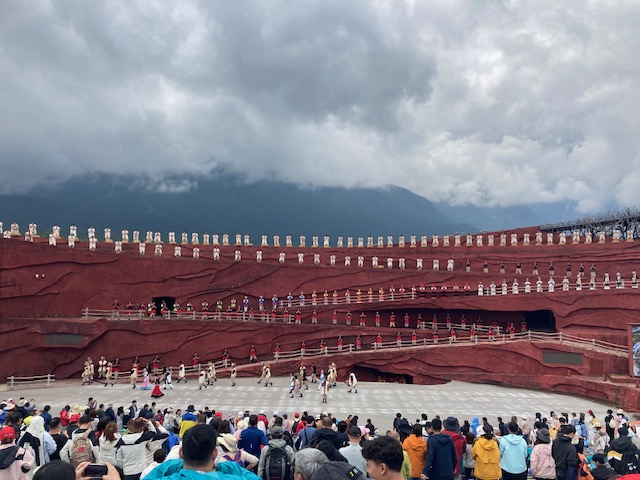
The most extraordinary though was Impressions of Lijiang. Directed by Zhang Yimou, who choreographed the Bejing Olympics Opening Ceremony, the show, staged outdoors at an altitude of 10,000 ft, draws its huge cast from 500 local people, all amateurs, to tell the story of their lifestyle and traditions. The scale was stupendous: the importance of the Tea Horse Road, for example, was illustrated by a hundred horses cantering around the top rim of the amphitheatre.
All the performances, whether modest or extravagant, featured fabulous costumes. It would have seemed churlish therefore to decline an opportunity in Dali to dress up in a traditional Bai costume check.
Dressing Up
After choosing mine I sit down to have a make-up artist buff and polish my skin to an almost deathly pallor. Unlike European tourists who want a tan, the Chinese want the opposite and wear huge hats and carry umbrellas and parasols to protect against even a ray of sun.
My outfit is crowned with a fabulously extravagant headdress and some more-is-more jewellery before I join other members of the group, all of us looking self-conscious but swanky.
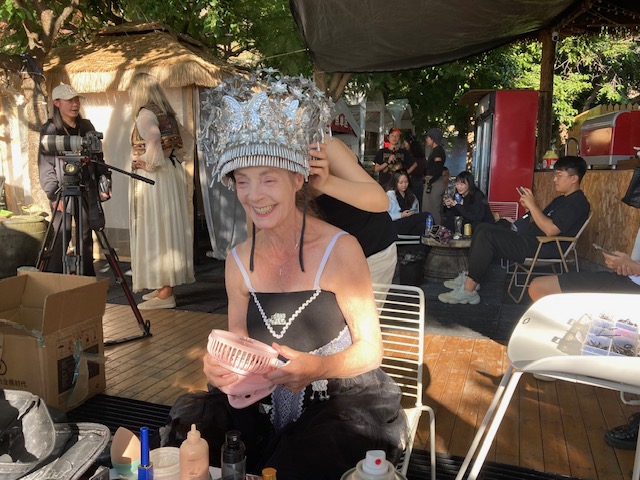
I see more dressing up when I go to watch the sunrise at Longkan Wharf a few miles outside Dali on Lake Erhai. After a beautiful dawn which turns sky and water blue, pink and gold, young women in ballgowns and couples in their wedding finery strike poses on the shore.
Wedding Fun Photography Ahead Of The Real Thing
These, however, are modest compared to the extravaganzas I watch on a visit to the staggeringly beautiful Blue Moon Valley below the Jade Dragon Snow Mountain, so called because the range’s 13 peaks mimic the creature’s spine.
Here it has become fashionable to have ‘wedding’ pictures taken six months before the actual ceremony. ‘What happens’, I ask our guide, ‘if the bride and groom then split up before the big day?’ ‘They tear the photo in two;’ he tells me, ‘and keep half each’. He adds that everyone is happy: the couple, the companies who offer the package, the villagers who see money flowing into their area (there is a charge just to enter this national park), the government who gets the taxes – and the environment. ‘If that got spoiled no-one would come.’
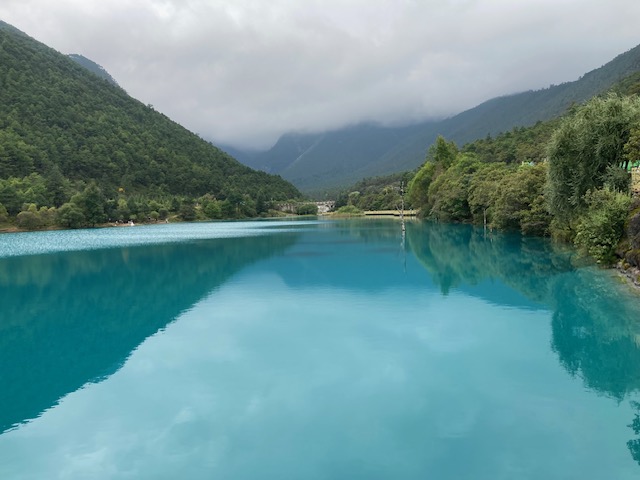
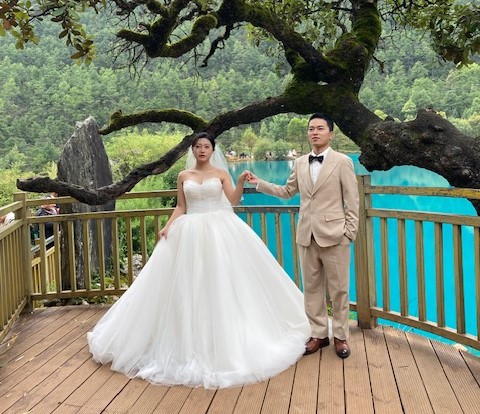
There are still relatively few European visitors in Yunnan Province, but the province is keen to attract more. The Chinese attitude to holidays here seems to be ‘we work hard, and we play hard’ so it is not for those who only want to snooze by the sea. For anyone with curiosity, enthusiasm and a willingness to try new experiences though it has an enormous amount to offer.
Tell Me More About Yunnan Province
China Southern Airlines flies daily from London Heathrow to Guangzhou with connections to all major Yunnan cities.
Return fares between £500 and £1000.
For tour operators to Yunnan please visit the Chinese National Tourist Office

